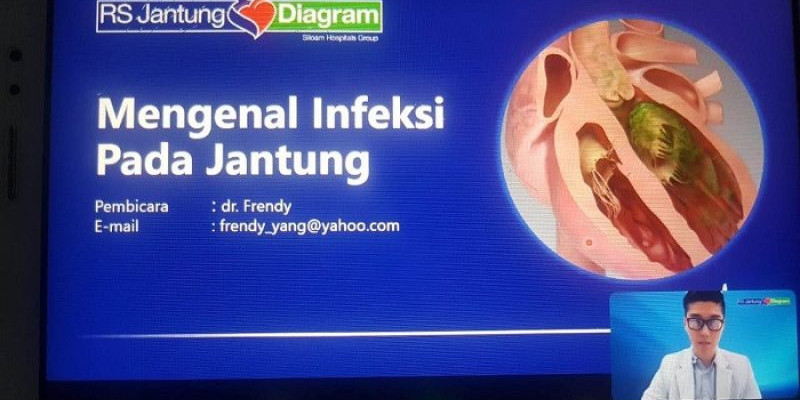ASKARA – Infection of the heart (Endocarditis) is an infection of the endocardium, which is the inner lining of the heart. This condition is generally caused by the entry of bacteria into the bloodstream, which then infects the damaged part of the heart.
Resident Medical Officer of the Diagram Siloam Cinere Heart Hospital, Dr. Frendy said, in general, endocarditis is relatively rare, does not attack someone with a healthy heart. However, this disease is prone to occur in individuals with certain conditions.
“For example, in certain types of heart disease, people with congenital heart disease, people with cardiomyopathy, and people with prosthetic heart valves. It would be better if it is known to have endocarditis, it must be treated immediately because it can damage the heart valves, and trigger dangerous complications,” said dr. Frendy through the zoommeting platform of the Diagram Heart Hospital, Tuesday (19/10).
Gejala Endocarditis
Symptoms of endocarditis can develop slowly over weeks or months (subacute endocarditis). It can also occur suddenly within a few days (acute endocarditis). This depends on the germ that causes the infection, and whether the patient has heart problems.
Frendy said the symptoms of endocarditis are chest pain that occurs when you breathe in, muscle joint pain, weakness due to fatigue, cold sweat, shortness of breath, swelling in the legs or abdomen.
“These symptoms can be felt. The best treatment early on is to hold a consultation, especially through consultation with our specialist doctors, Siloam Cinere Heart Hospital,” said Dr. Frendy.
Handling
Treatment with the following sequence of actions (depending on the case): Physical examination by a doctor, laboratory and blood culture, chest X-ray, ECG, ultrasound of the heart, CT Scan and MRI.
The complications that are very likely to arise in patients with endocaritis include: Valve damage and heart failure, blood ‘bacteria’ when it enters the brain tissue of a stroke, abscess formation, then treatment which also depends on the case can be in the form of: Administration of high doses of intravenous antibiotics, heart surgery and/or heart valve replacement.
He also explained that there are two types of heart valve replacement, namely ‘biological’ heart valves made of heart valves, cows, pigs, or humans and ‘artificial’ heart valves or also called mechanical heart valves made of carbon and titanium.
Dr. Frendy added, there are advantages and disadvantages to using two types of heart valves, such as the advantages of biologic valves, no need to take long-term blood thinners because of the low risk of blood clots.
However, it has disadvantages, among others: it has a weaker durability of 10-20 years, which means it requires re-operation if the biological valve starts to “break down”.”
While the advantages of ‘mechanical’ valves are stronger and longer durability, even for the rest of the patient’s life, but there is a risk of blood clots forming and will continue to take blood thinning drugs even for life.
“Although it is not yet known in detail, it is recommended to prevent infection in the heart with actions such as paying attention to the health of teeth and gums and mouth with control every 6 months,” explained Dr. Frendy.
Another thing is to make sure (if any) dentures are installed normally, avoid needle abuse and some things about blood health.
– .


